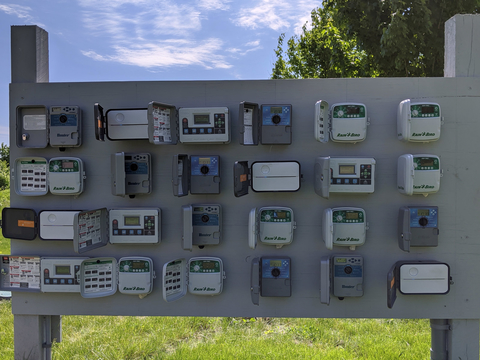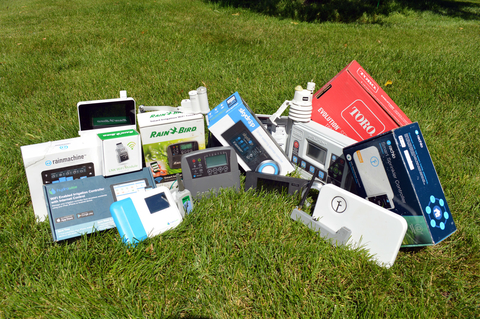How to make your irrigation system “smart”
As irrigation systems and sprinklers continue to be turned on, we want to let everyone know of some technologies that may help you use water more efficiently this year. To begin, not everyone in the Twin Cities metro area (TCMA) has an underground sprinkler system. Residents closer to the Metro typically have older homes with smaller yards that can be watered with a quick walk and a hose. Though effective, this practice can be hard to implement in more suburban neighborhoods with larger lawns and landscapes. For these landscapes, turning off your sprinkler system after a rainstorm, or even better, turning it off with rain in the forecast can greatly contribute to water savings.
Unfortunately, when it comes to lawn irrigation, many homeowners use the “set it and forget it” approach. This means as temperatures rise, residents turn on their irrigation system, create a schedule, and leave it that way until it's time to shut the system down as winter rolls in. With this in mind, several companies have done their best to implement “smart” technologies into irrigation systems to mitigate the effects of this type of mindset. Below is a brief description of a few technologies that can help a homeowner water their lawn and landscape more efficiently.
Rain sensor - As rain falls, the cork discs within the sensor begin to swell. This swelling interrupts communication for the irrigation controller and cancels any irrigation events until the discs dry out and shrink.
Soil moisture sensors - Similar to a rain sensor, a soil moisture sensor can tell you how “wet” the soil beneath your lawn is. Based on a moisture level, set by the homeowner, irrigation events are cancelled until the sensor detects the soil is “dry” and below the set moisture threshold.
Wi-fi enabled irrigation controller - These controllers are often called “smart” controllers and can tap into local weather data from surrounding weather stations in the area. Many of these controllers have a partner smartphone application which allows for customized irrigation schedules and zones.
Though any homeowner can make proper watering decisions for their lawn, many do not. Fortunately, products exist, and continue to be produced, which take the decision making process out of the hands of a homeowner and allow for “automatic” water savings. These products aren’t perfect and may not maximize water efficiency, but they allow homeowners peace of mind and have been proven to use less water than the “set it and forget” approach we often see people use.
If you would like to learn more, please visit our field research project site at the Minnesota Landscape Arboretum or use the following resources:
- Learning to control your irrigation controller, part of our Watering Wisdom webinar series.
- Water-saving strategies for home lawn.



